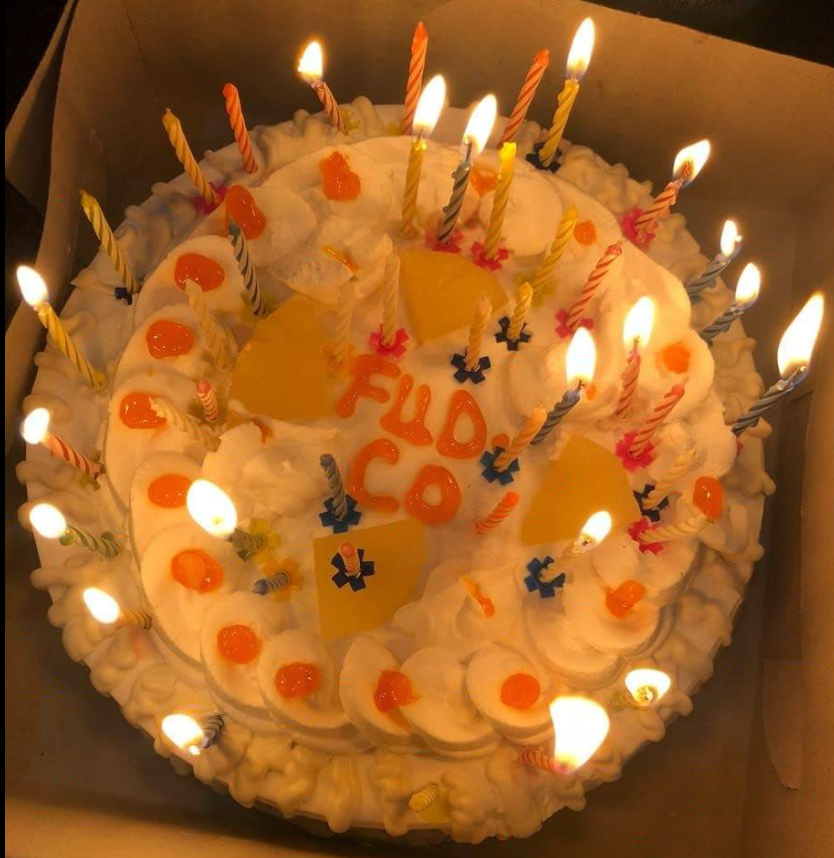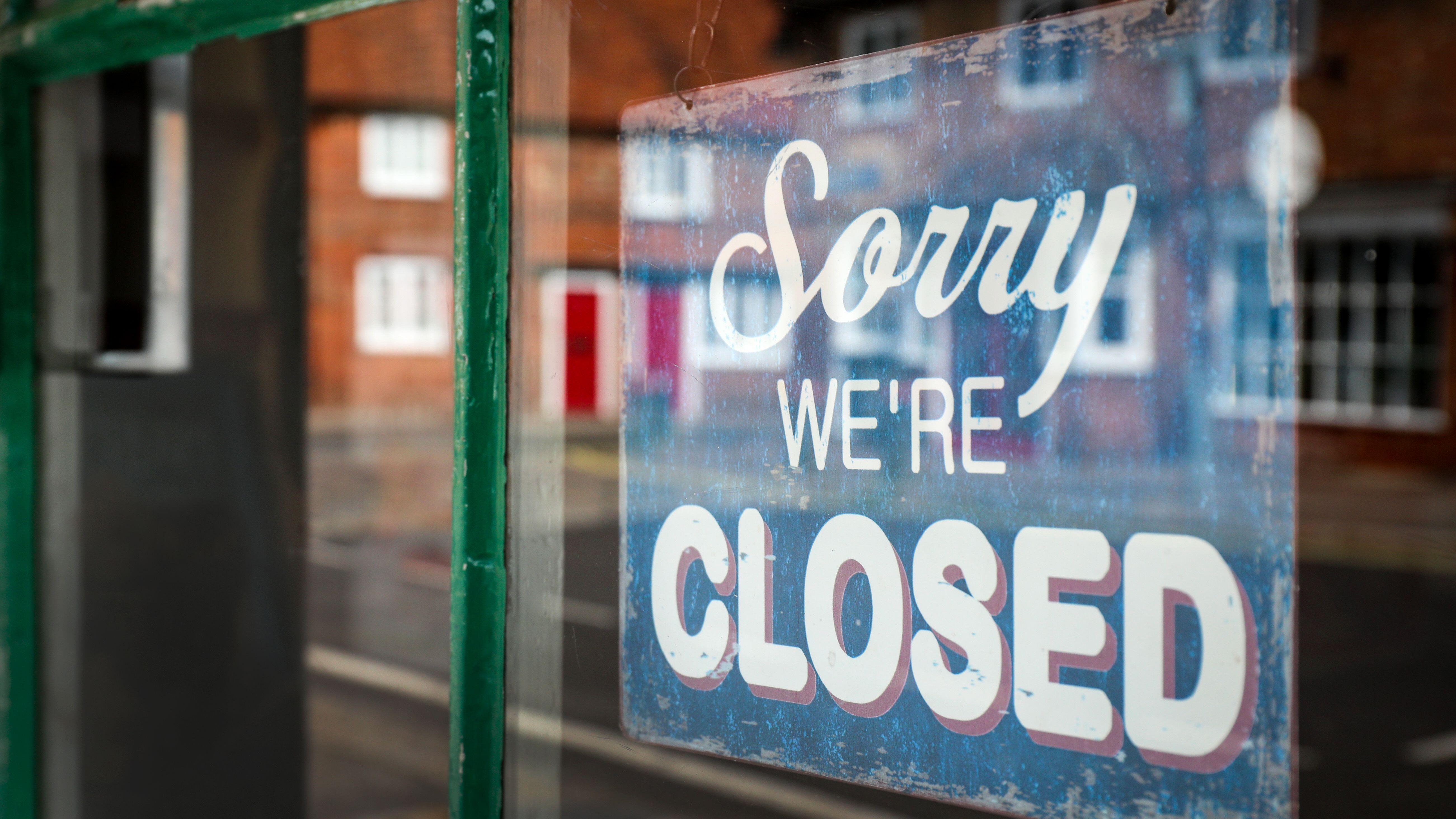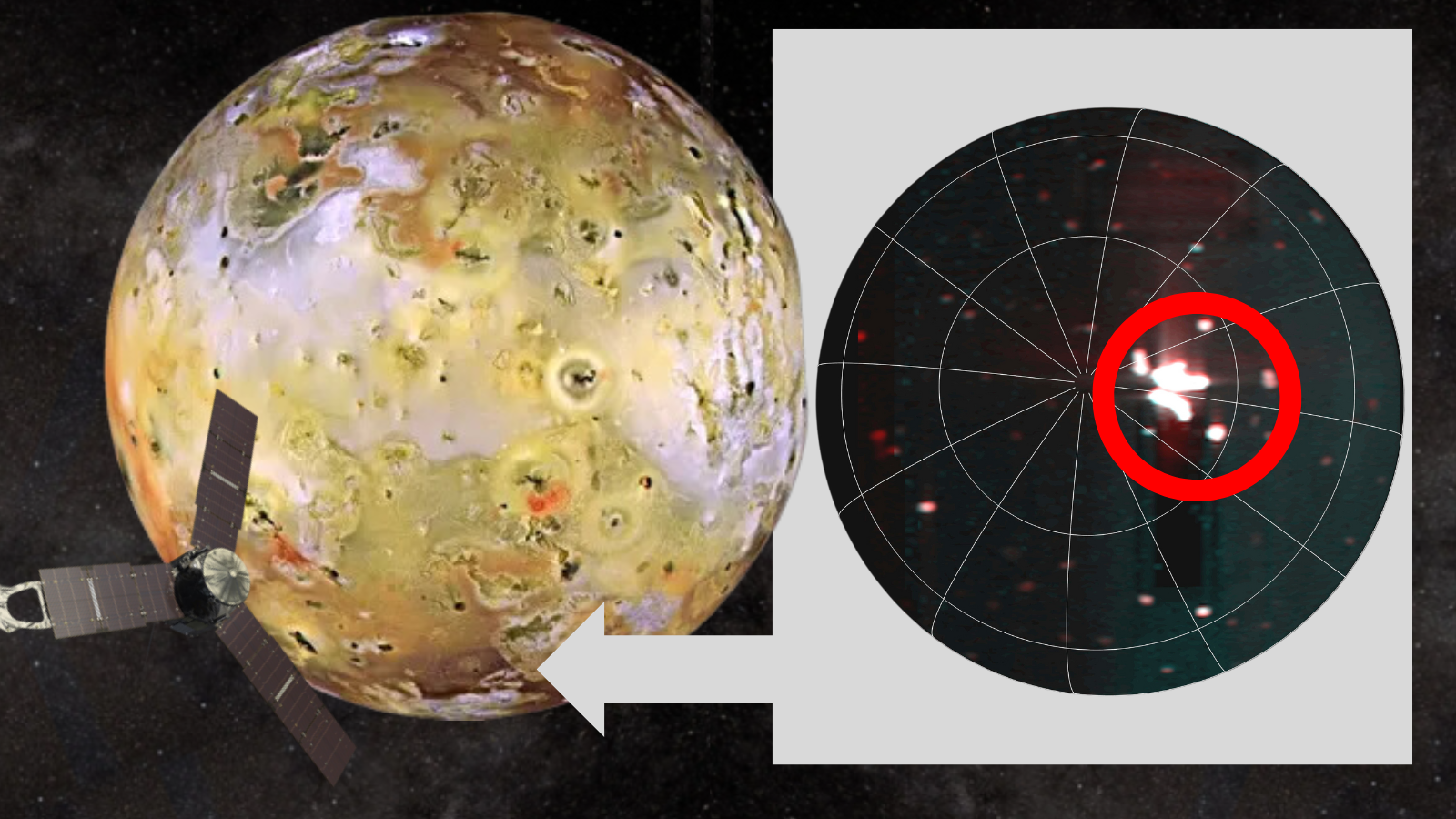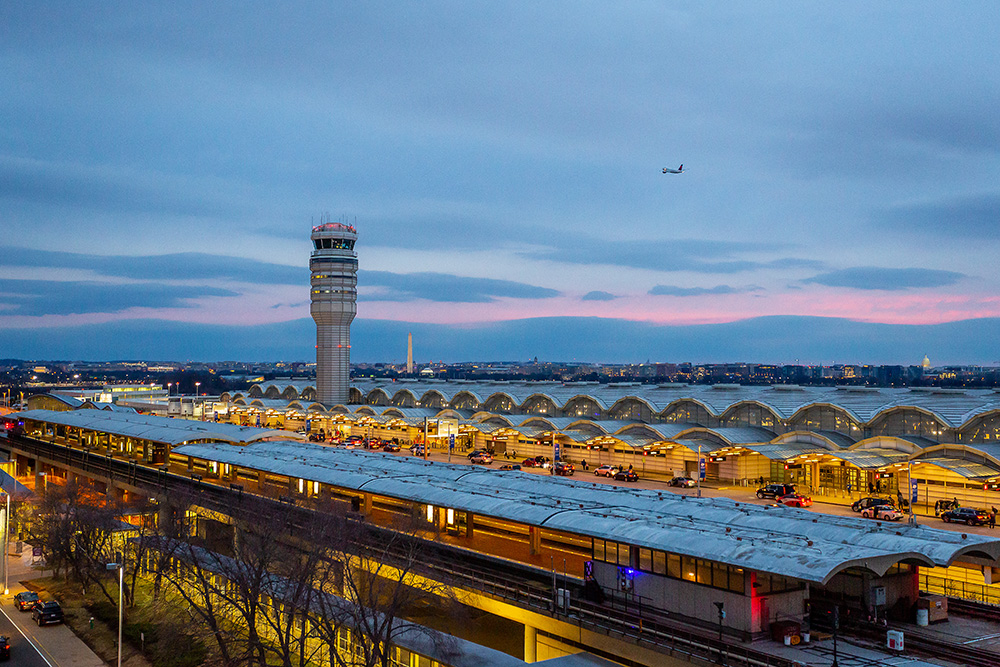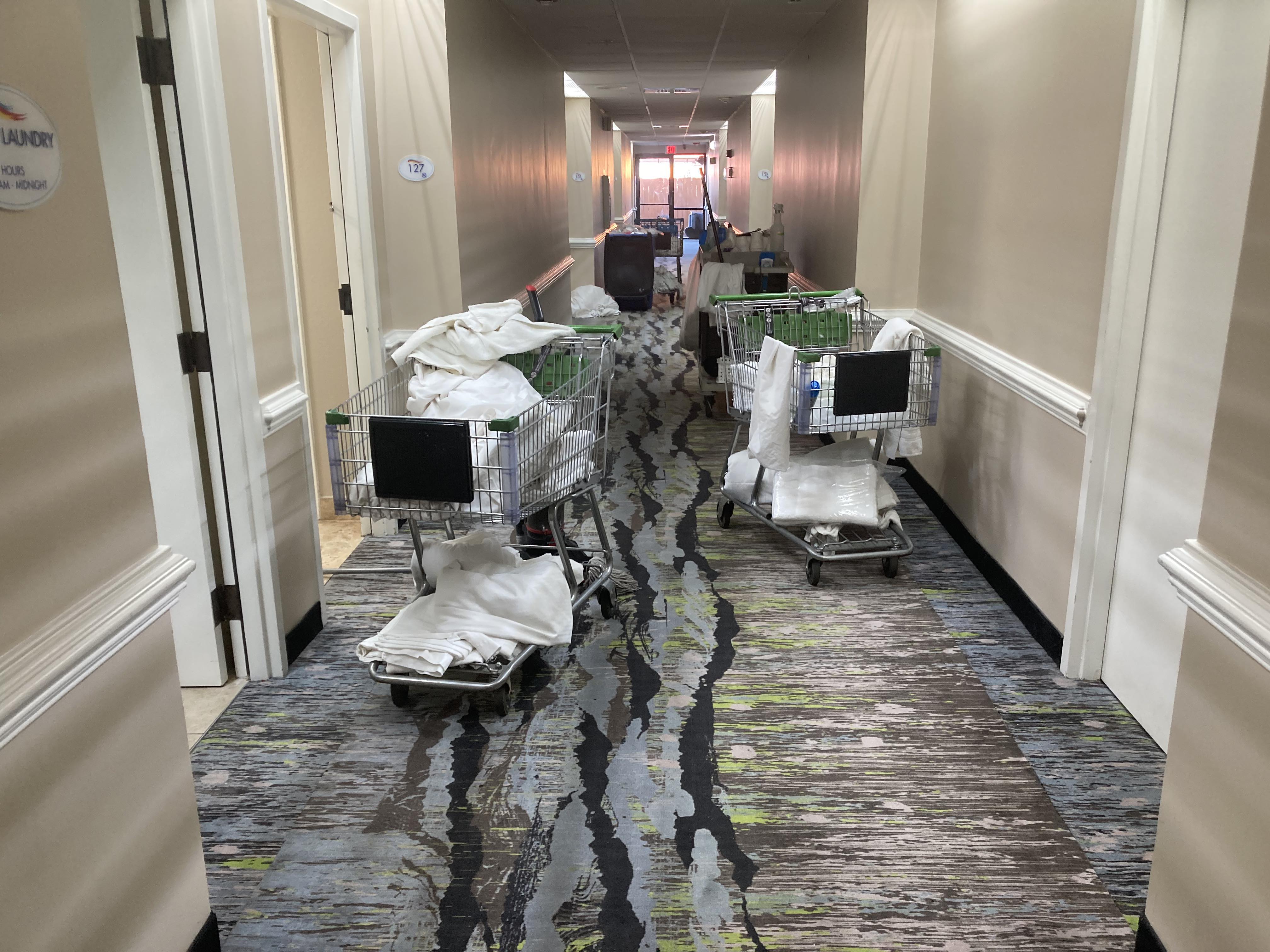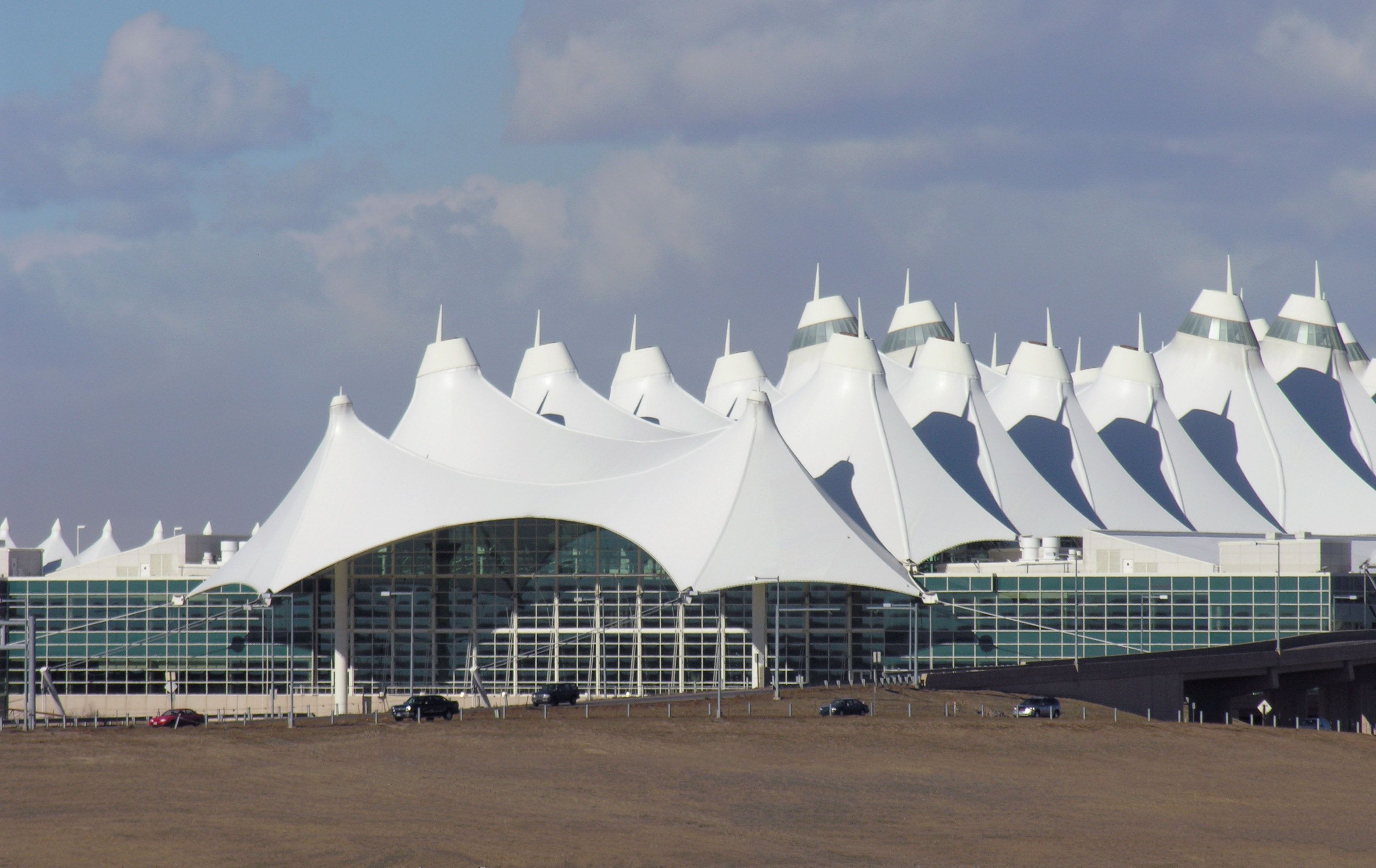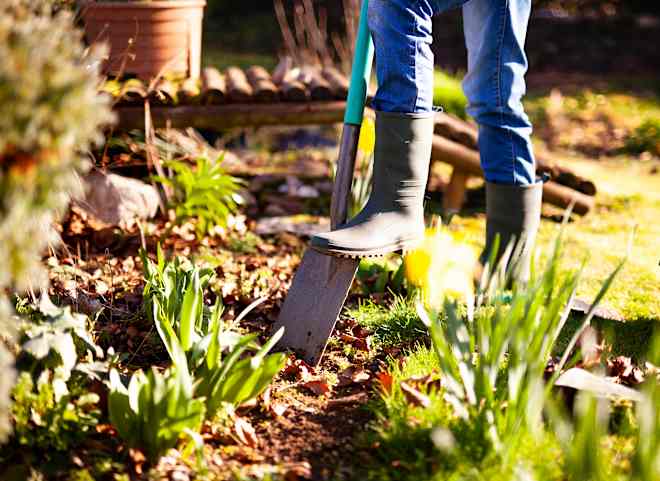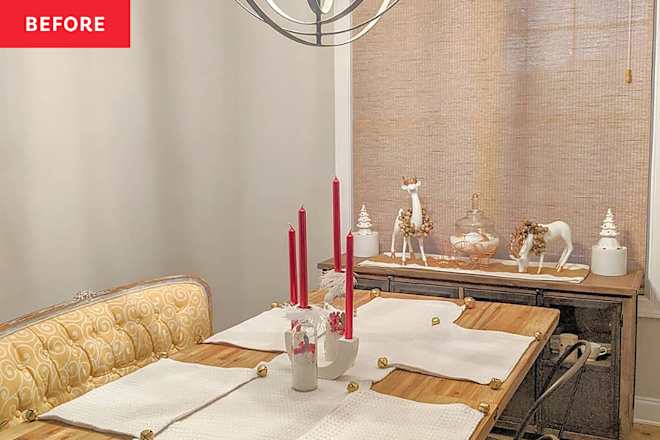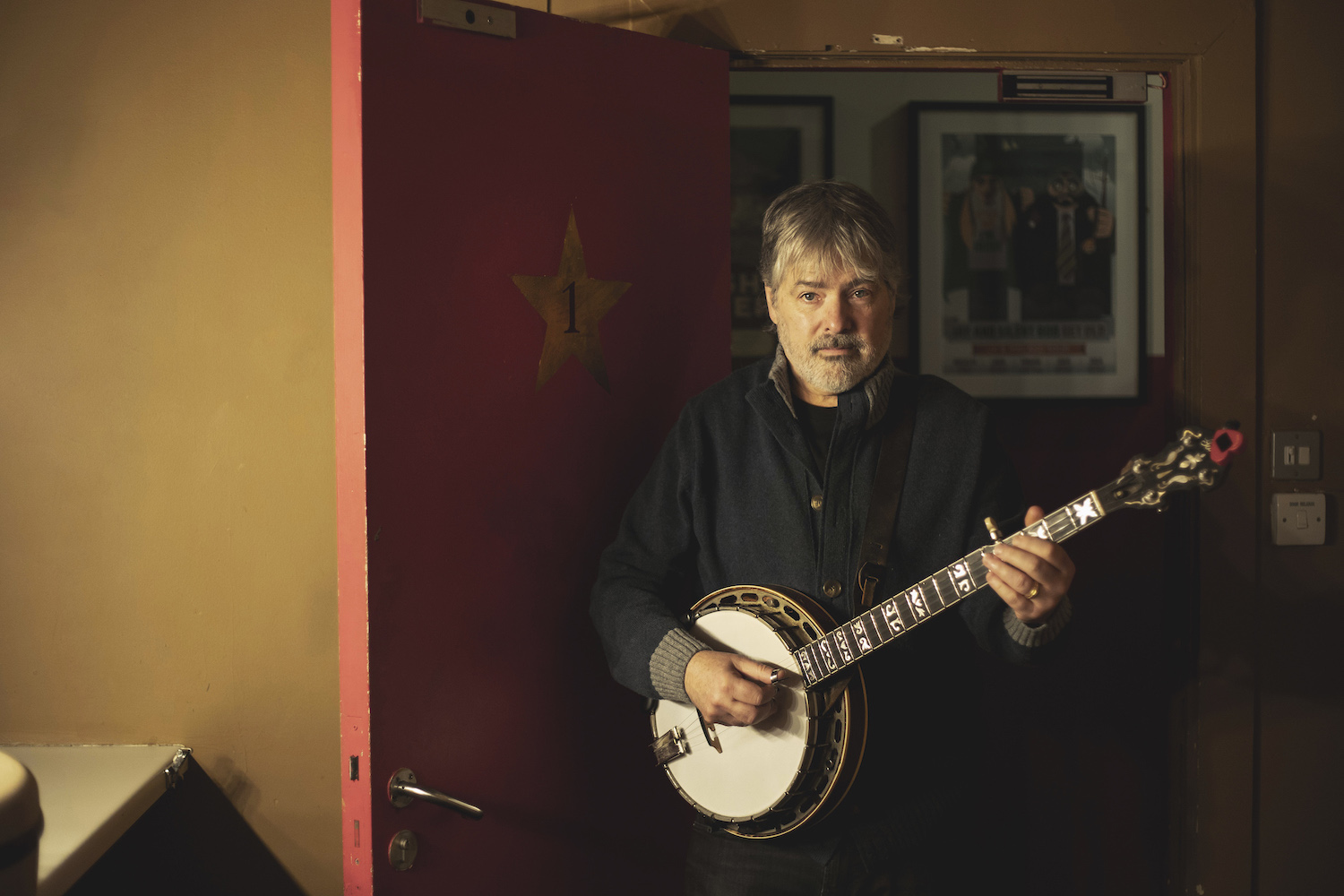13 Small French Towns Every Wine Lover Should Have on Their Travel List
Get out in the vineyards and taste world-class wine.
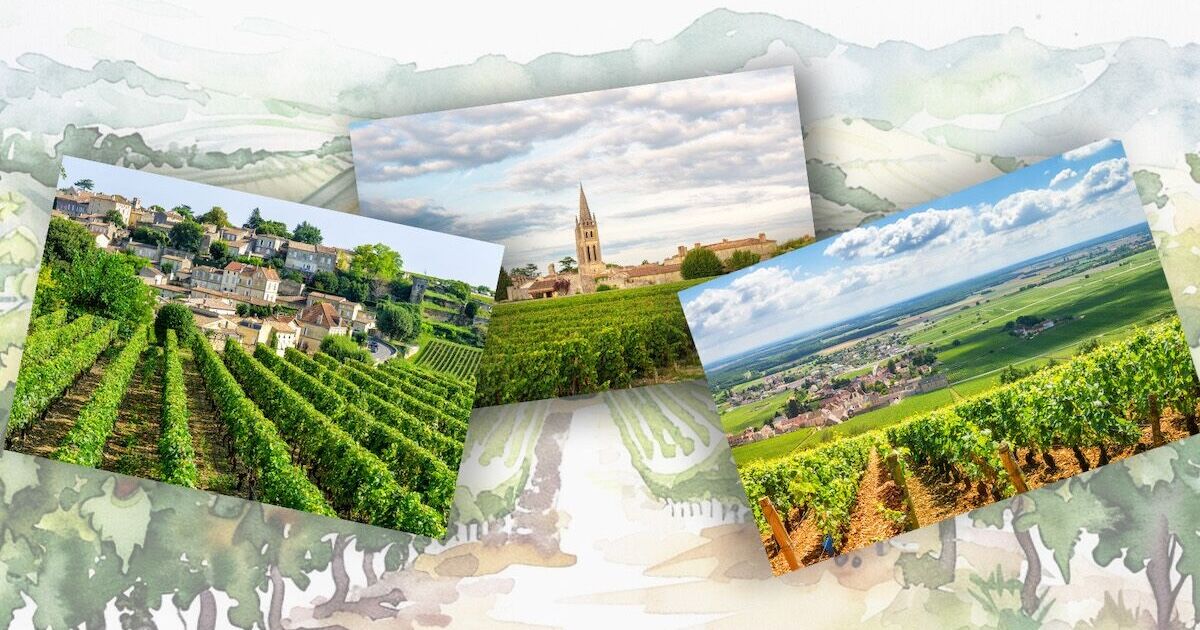
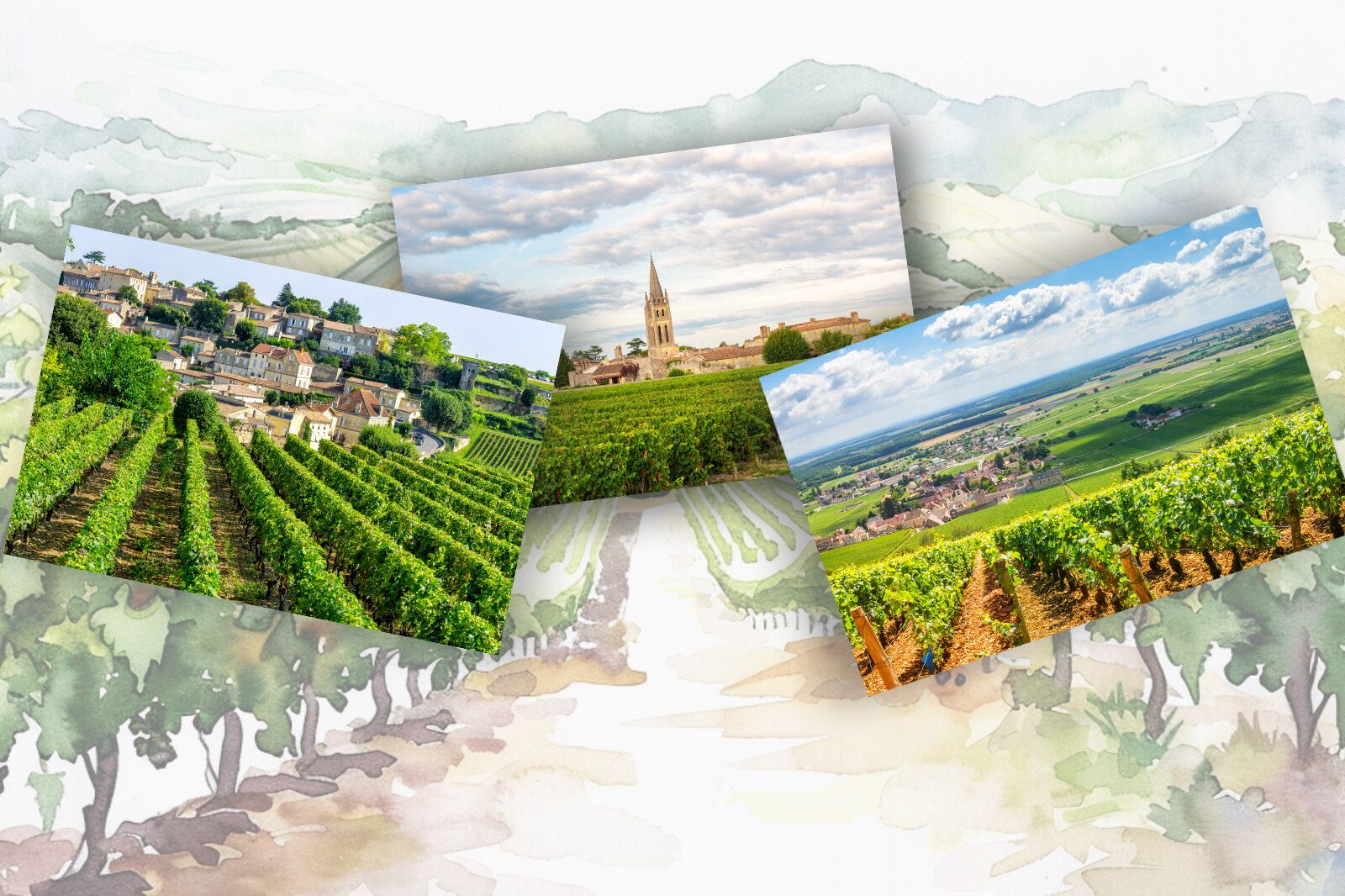
For winer lovers, few places are more iconic than France. Here, wine isn’t just a beverage, it’s a millennia-old tradition that is an important part of every meal and celebration. Wine defines the country’s landscape, the population’s livelihood, and even the calendar. Travelers can experience a remarkable breadth of wine culture in France’s biggest cities — Paris, Lyon, Bordeaux, Nantes, Strasbourg — but the wine trips that stand out most are in the small towns that surround the country’s most famous vineyards and viticultural areas. That’s because in addition to the tastings and access to wines not found elsewhere, visitors can often walk among the vines and meet winemakers in beautiful, historical settings.
Getting off the tourist track and bumping along country roads to reach these 13 small towns is more than worth it for wine lovers.
Contributors: Morgane Croissant, Suzie Dundas, Katie Gavin, Nickolaus Hines, Tim Wenger
We hope you love the stays we recommend! Just so you know, Matador may collect a small commission from the links on this page if you decide to book.
Jump to:
Beaune, Côte-d’Or
Bergerac, Dordogne
Cahors, Lot
Châteauneuf-du-Pape, Vaucluse
Chinon, Indre-et-Loire
Clisson, Loire-Atlantique
Cognac, Charente
Hautvillers, Marne
Montreuil-Bellay, Maine-et-Loire
Olmeto, Corse-du-Sud
Riquewihr, Haut Rhin
Saint-Émilion, Gironde
Villeneuvette, Hérault
Beaune, Côte-d’Or
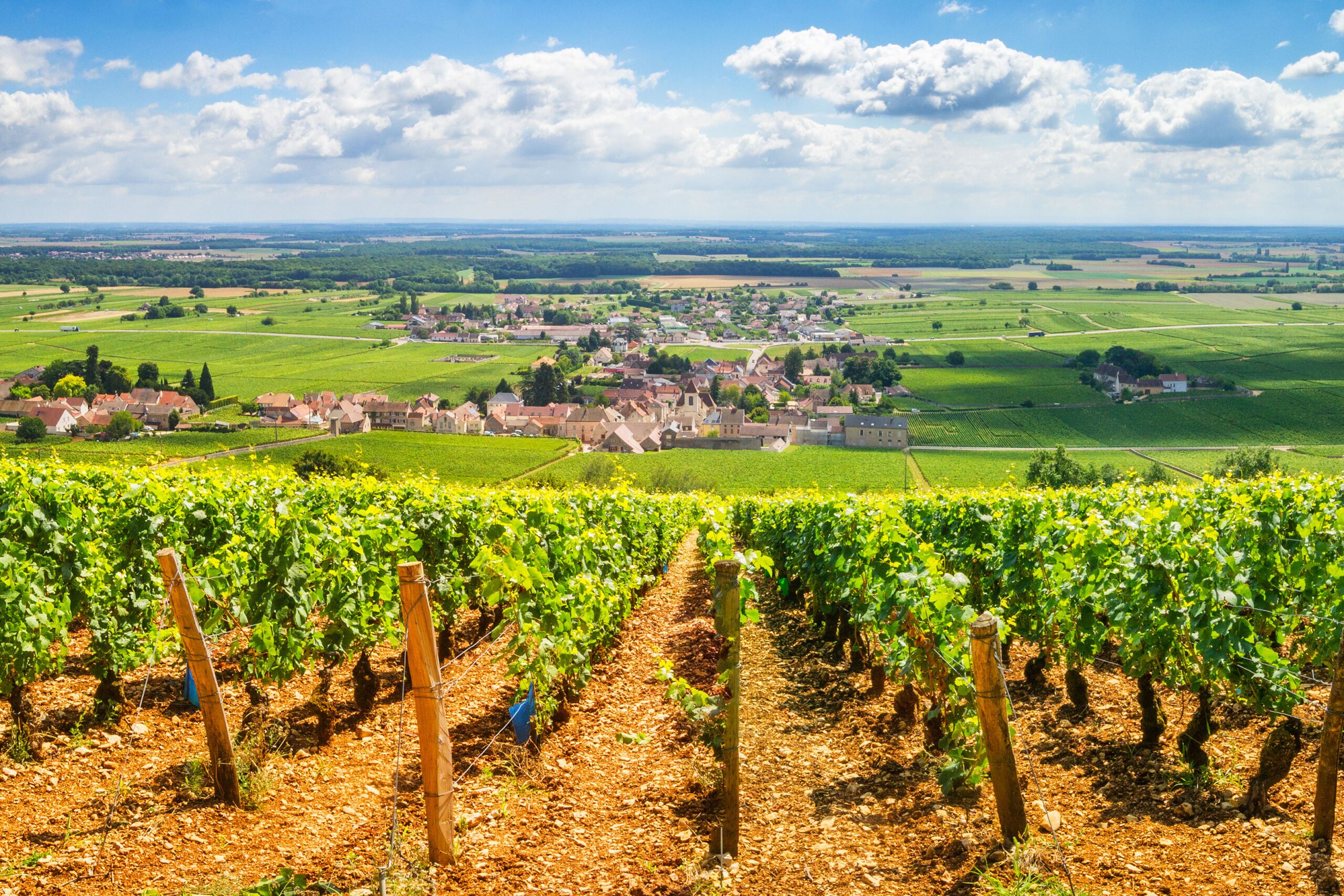
Photo: tichr/Shutterstock
- Why we love it: A center of Burgundy’s wine production and trade with a deep history
- What wines to try: Chardonnay and pinot noir
- Best place to stay: L’Hôtel de Beaune
Burgundy’s place in wine history is no secret. The region is one of the most famous in France for the high quality wines produced and exported from here since at least the 1400s (though like much of France, vineyards were introduced by the Ancient Romans more than 1,000 years earlier and they, too, recognized how the area has prime grape-growing conditions). Catholic monks managed the vineyards and studied the best land for grapes through the Middle Ages for wines for the church and the Dukes of Burgundy. After the French Revolution, the land went back to the people. Location and terroir play just as important a role today as they did half a millennium ago.
The small town of Beaune has long been at the heart of the wine trade in Burgundy and played a crucial role in moving Burgundian wine around the world. It is also the cultural center of Côte de Beaune (“hills of Beaune”), the largest appellation in the Côte d’Or. Together with the Côte de Nuits to the north, the Côte d’Or is one of the most important regions in Burgundy overall.
There are eight Grand Cru vineyards in Côte de Beaune, and seven focus on white wine: Corton (the red wine exception), Corton Charlemagne, Charlemagne, Montrachet, Chevalier-Montrachet, Bâtard-Montrachet, Bienvenues-Bâtard-Montrachet, Criots-Bâtard-Montrachet. Those join more than 40 Premier Cru vineyards making crisp chardonnays and complex pinot noirs. Despite the chardonnay dominance at the echelon of producers, more than 70 percent of the vineyards in Beaune are dedicated to pinot noir.
Beaune has an impressive amount of tourism infrastructure for a small town thanks to its central role in the wine trade and its reputation among wine lovers. In addition to incredible five-star hotels like L’Hôtel de Beaune, there are plenty of Airbnbs to choose from. Many wineries in and around Beaune offer tours and tastings. Be sure to visit the Hospices de Beaune for a look into the wine commerce history here. While there are certainly enough wineries to fill multiple trip itineraries in Beaune alone, the proximity to classic villages like Meursault and Pommard make Beaune somewhere that can serve as a base for the wider region, too.
By train is the best way to get to Beaune. The local station connects to major cities in France and is about 2.5 hours from Paris. Driving along the A6 is another option, or flying into the Dijon-Bourgogne Airport and driving from there.
Bergerac, Dordogne
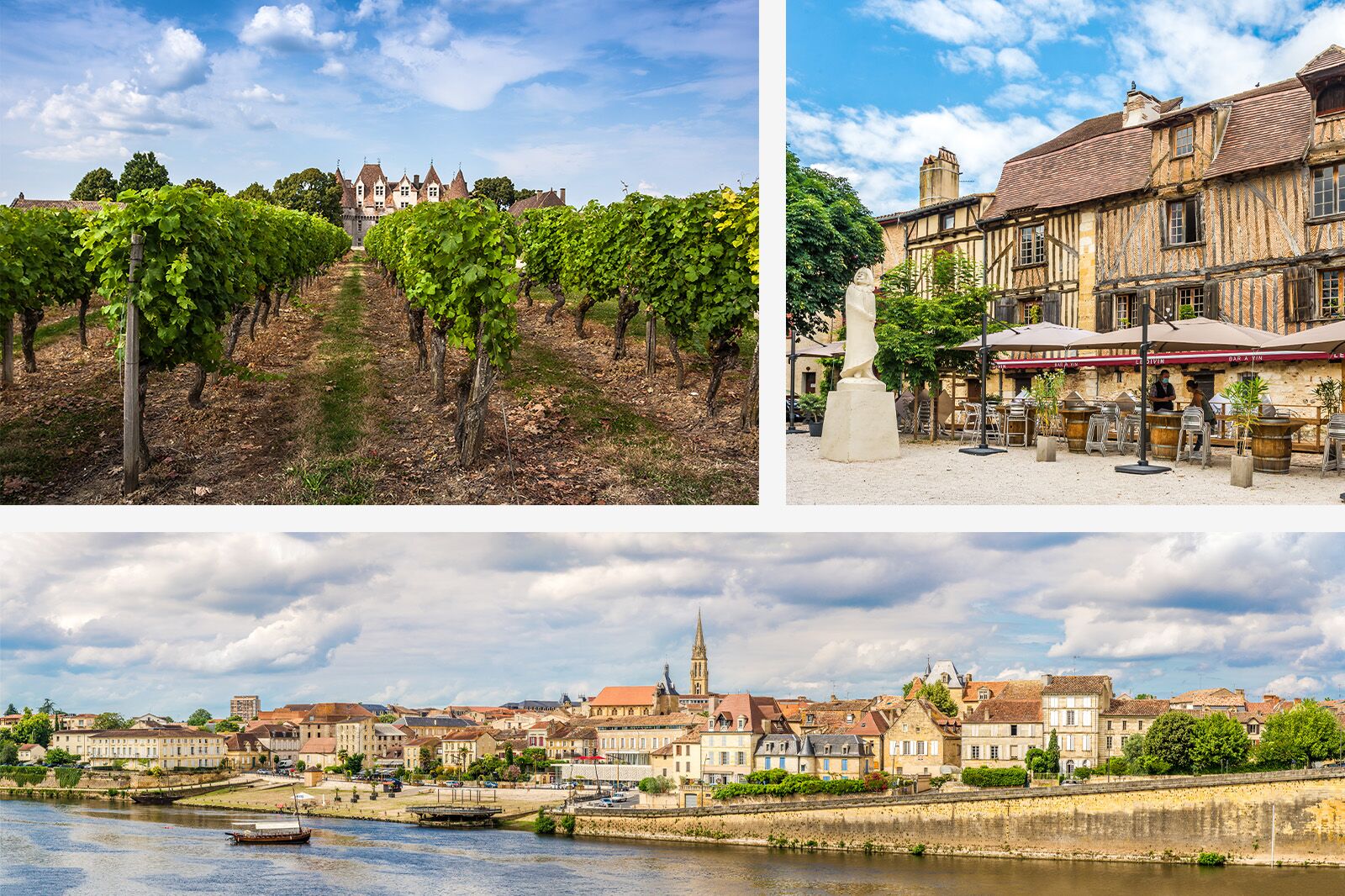
Photos: Sergey Kelin/Shutterstock, milosk50/Shutterstock, and milosk50/Shutterstock
- Why we love it: A wine-rich region with small crowds
- What wines to try: Muscadelle in Monbazillac, red blends in Pécharmant
- Best place to stay: Le Clos d’Argenson in the center of town, or Château Feely for a more immersive wine experience
Bergerac sits in southwestern France along the Dordogne River. Aside from its wine, the town is known for its well-preserved medieval architecture and half-timbered houses. It’s wine reputation is due to the proximity to two wine appellations: Monbazillac and Pécharmant. Monbazillac produces white wine made from grapes intentionally left on the vine long enough for botrytis (“noble rot”) to create natural sweetness, while Pécharmant is known for its full-bodied reds that age extremely well (so feel free to bring back a case or two).
Bergerac’s historic quarter is filled with cobblestone streets, half-timbered houses, and quaint squares. The Place Pelissière (Pelissière Place) is a central point, often bustling with markets and cafes. It’s small, of course — this isn’t the same type of square you’d find in Rome or Paris — but that’s part of the appeal. Nearby is Quai Cyrano, a central hub for all-things Bergerac wine, including wine tastings, wine events, a local market, and more.
On the outskirts of town, you’ll find more than 150 wineries, with the highest concentration in the Monbazillac Valley, just south of Bergerac. (Pécharmant is to the east). The region’s tourism website has an excellent list of local wineries and details on visiting, so it’s easy to visit yourself if you have a car. But if you’d prefer not to drive, you’ll find plenty of wine tours in the area, and large area wineries like Château Feely offer in-depth tours and tastings that include local pickup from Bergerac.
Cahors, Lot
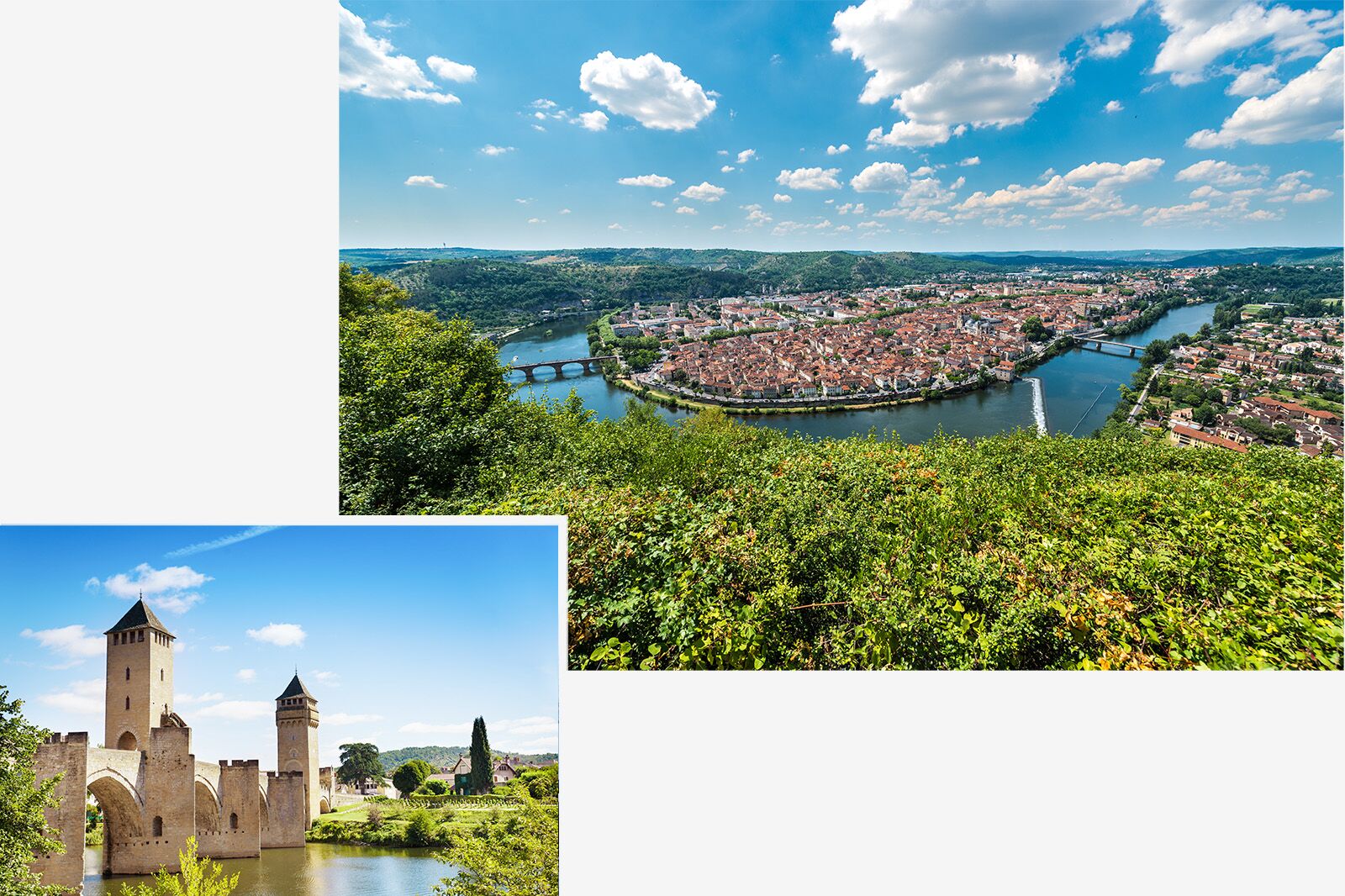
Photos: Anibal Trejo/Shutterstock and Sergey Novikov/Shutterstock
- Why we love it: Historic small town with beautiful medieval architecture, UNESCO-listed sites, and local culinary specialties
- What wines to try: Malbec
- Best place to stay: The Best Western Plus Hôtel Divona Cahors, is not only close to the city center and the Chartreux Fountain, but it has great views on the Valentré Bridge
Cahors (pronounced kaa-orr) is both the name of a quaint southeastern town of 20,000 people, and that of the wine produced from the grapes that grow around it. Although Cahors, the town, is divided into two parts by the Leon Gambetta Boulevard, the old town and the modern town both have worthy attractions that can easily be visited in a couple of days. Make sure to check out the abundant Roman and medieval architecture, the covered market, and the 900-year-old domed Saint-Étienne Cathedral UNESCO World Heritage site in old town. The 700-year-old market taking place around the cathedral every Saturday is one you don’t want to miss if you’re keen to try local specialties, including duck or goose foie gras, walnut tart, croustilot bread, and pastis, an apple- and prune-based cake. In the modern part of town, check out the underground remains of an ancient Roman amphitheater before crossing the Lot River via the 14th-century UNESCO-listed Valentré Bridge and take a peek at the Chartreux Fountain, where Romans used to worship the goddess Divona.
Culture and food often take a backseat to what this region is best known for: wine.
Cahors is a bold, deep, and dark wine (sometimes called black wine) made from malbec grapes (a variety that is locally called côt). While there are numerous wine producers in the area, travelers to Cahors would be remiss to pass on a visit to Château Eugénie and Château Les Bouysses vineyards, where you can partake in wine tastings.
Châteauneuf-du-Pape, Vaucluse
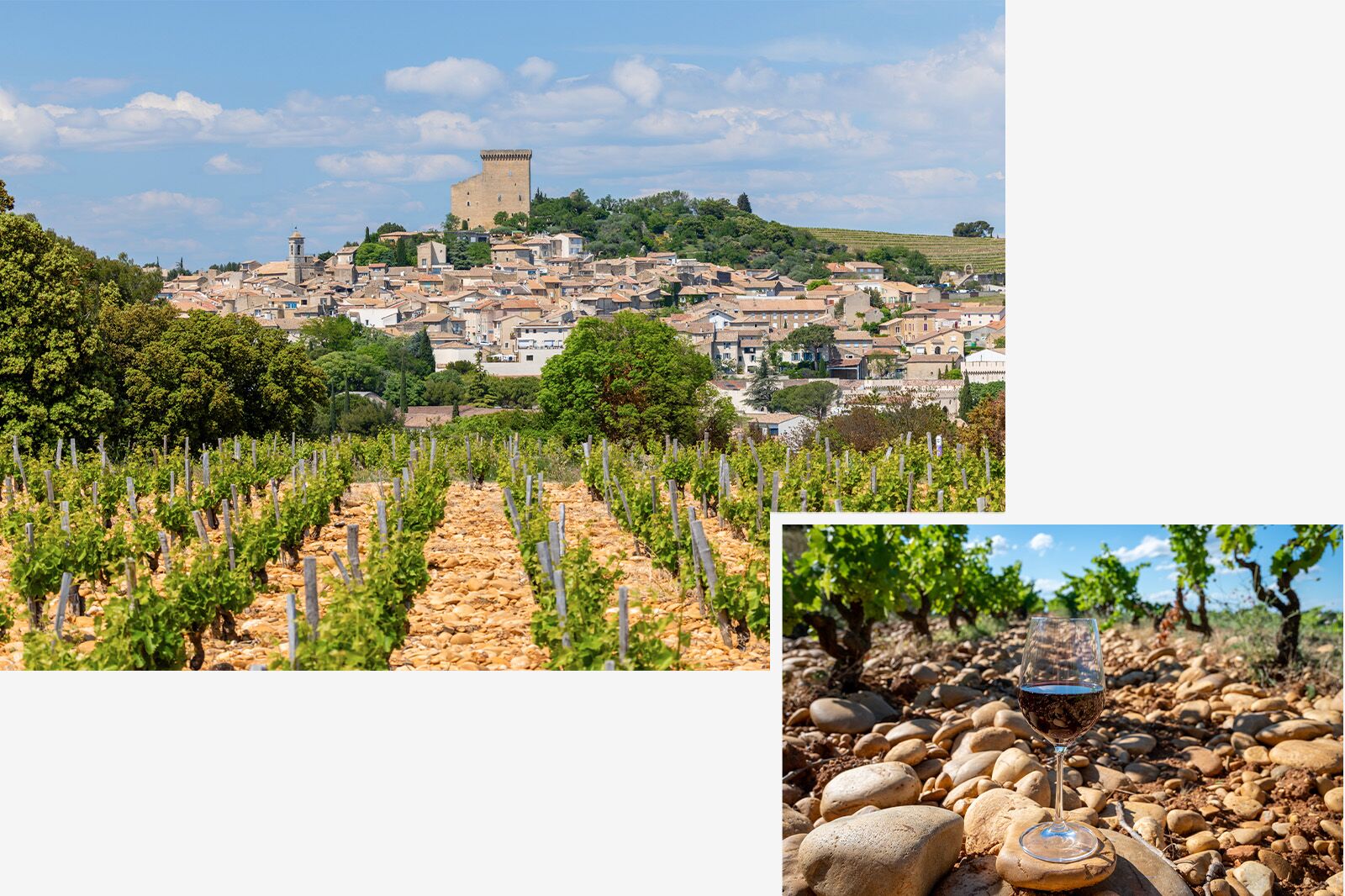
Photos: Richard Semik/Shutterstock and barmalini/Shutterstock
- Why we love it: A medieval village that owes its existence to a former Pope
- What wines to try: grenache, syrah, and mourvèdre
- Best place to stay: Hôtel Château des Fines Roches
The village of Châteauneuf-du-Pape (which translates to “new castle of the Pope”) was founded in the early 14th century, when Pope John XXII established the area as a papal residence. The ruins of the castle built under his direction still crowns the village. The wine region here flourished under papal influence, and that tradition continues today. Select wines from the region can fetch some of the highest prices from collectors, though visiting the town means a lot more than spending every penny on an investment wine.
Wines from Châteauneuf-du-Pape are among the most prestigious in the Rhône Valley. The region’s terroir is defined by galets roulés — large, sun-warmed stones that enhance grape ripening. The appellation permits up to 13 grape varieties, with blends of grenache, syrah, and mourvèdre (a mixture often shortened to simply “GSM”) being the most prominent for red wines. Grenache contributes ripe red fruit and spice, syrah adds structure and dark fruit, and mourvèdre imparts complexity and earthy depth. The region also produces outstanding white wines, often blending roussanne, grenache blanc, and clairette for vibrant, aromatic expressions.
If you go, be sure to explore the historic cellars and hire a driver to visit nearby sites like Avignon and the Dentelles de Montmirail.
Chinon, Indre-et-Loire
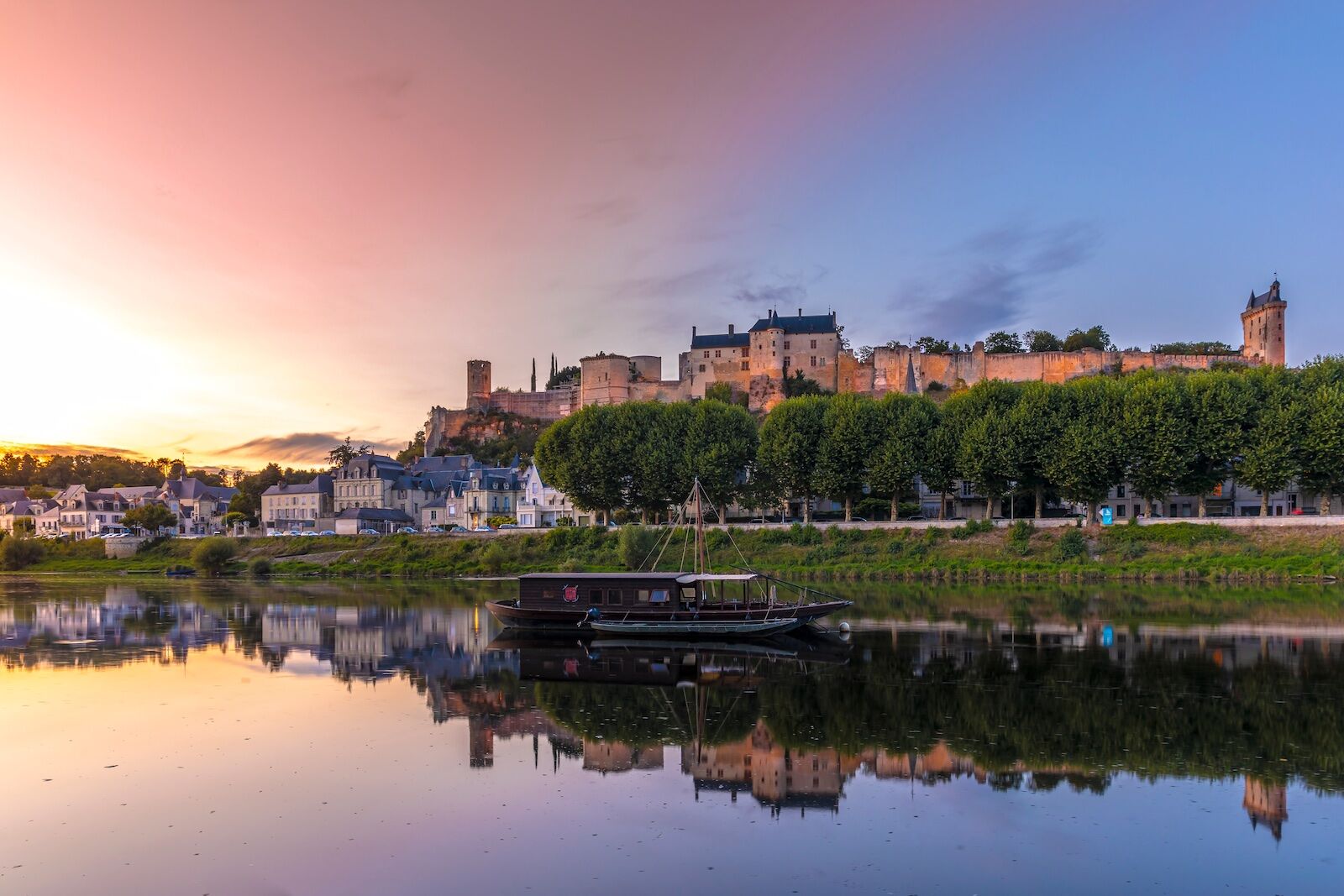
Photo: Sander Meertins Photography/Shutterstock
- Why we love it: A historical town close to two of the most beautiful castles in the Loire Valley: Château d’Ussé and Château d’Azay-le-Rideau
- What wines to try: Cabernet Franc and chenin blanc
- Best place to stay: The converted horse stable Domaine Pierre et Bertrand Couly
The small, UNESCO-listed town of Chinon, located on the banks of the Vienne River in France’s Loire Valley, is known for three things: the imposing medieval royal fortress that stands on a rocky outcrop and overlooks the town; the historical edifices that line its narrow streets, including timber-framed houses and 19th-century private mansions; and wine. Chinon is not only the name of the town, it’s also the name of the wine designation.
Chinon producers primarily make red wine using cabernet Franc, though the region also produces smaller amounts of rosé and white wines from chenin grapes. The organically run Domaine de Noiré, only two miles from the city center, is a good place to try Chinon wine, from reds, to whites, to sparkling wines. Book ahead for a guided visit and a tasting. The Domaine Pierre et Bertrand Couly is another nearby vineyard that’s worth visiting — or to extend the visit with a stay at the on-site accommodations.
Clisson, Loire-Atlantique
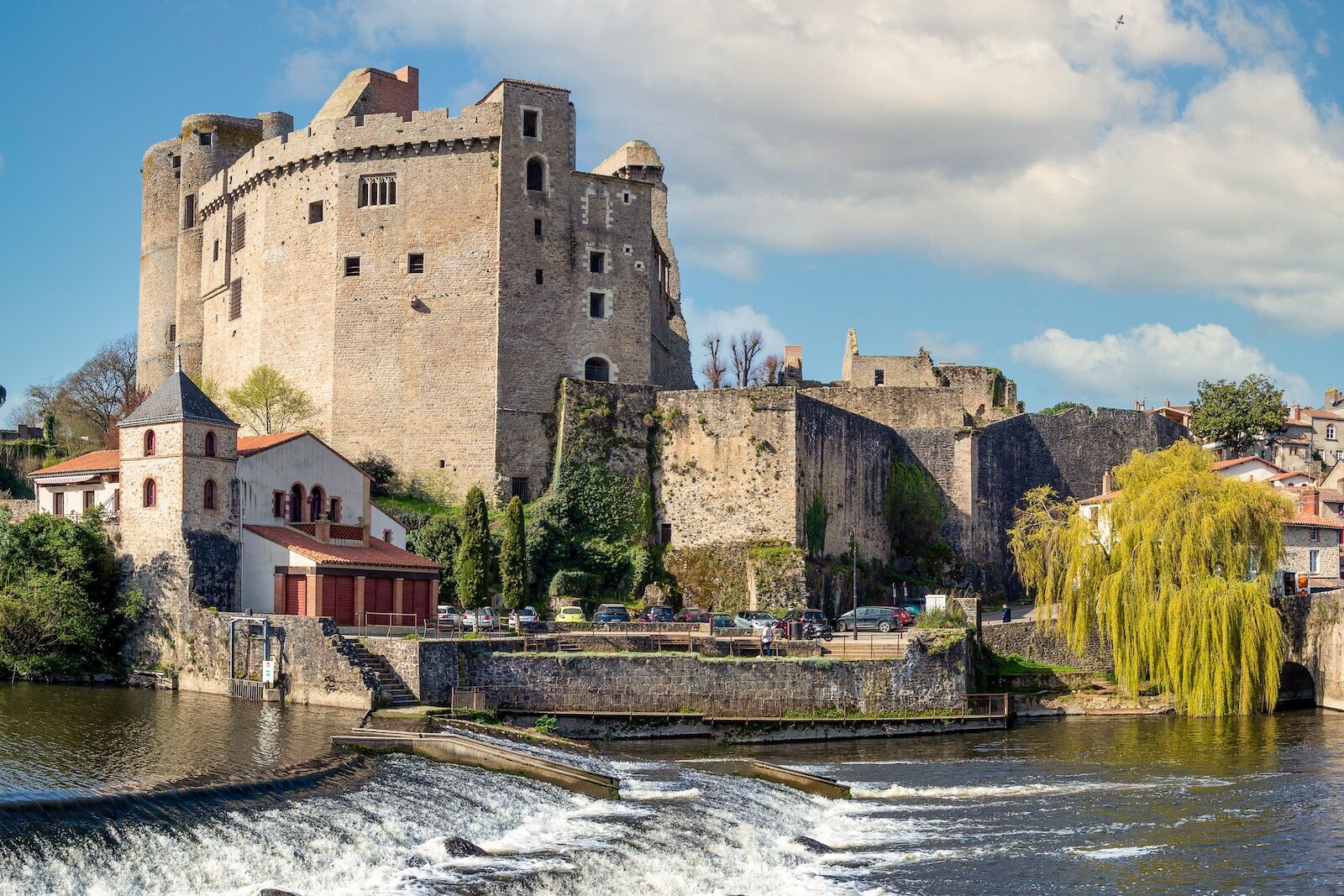
Photo: Rodolphe Antonetti/Shutterstock
- Why we love it: An Italian atmosphere and abundance of historic buildings
- What wines to try: Muscadet
- Best place to stay: La Cascade
Located in western France along the banks of the Sèvre Nantaise River, Clisson looks a little like a small Tuscan village thanks to its narrow streets and brick houses topped with terra cotta roofs. That’s because in the early 19th century, French sculptor François Fédéric Lemot, a lover of Italian art and architecture, entirely redesigned the then war-torn town. He even built his own Tuscan paradise, La Garenne Lemot, a large property with a beautiful garden that is open to the public.
Clisson’s Italian flair is not its only appeal, however. The small town is full of protected historical buildings that predate Lemot, including Clisson Castle and the medieval covered market where you can try local specialties like fouace nantaise (a star-shaped brioche). There is also a wide variety of events taking place in this small, underrated town, including one of the largest metal music festivals in Europe, Hellfest, that takes place every year in June, and an annual Venice-like masquerade parade that happens in May.
But Clisson’s most attractive facet is undeniably its vineyards that produce dry and crisp white wines with muscadet grapes. The vineyards surrounding the town can be reached by bike, including the organically run Domaine Bregeon just three miles out of Clisson, and the family-owned Domaine Martin-Luneau, a few minutes away. Both offer visits of the vineyard and wine tastings.
Cognac, Charente
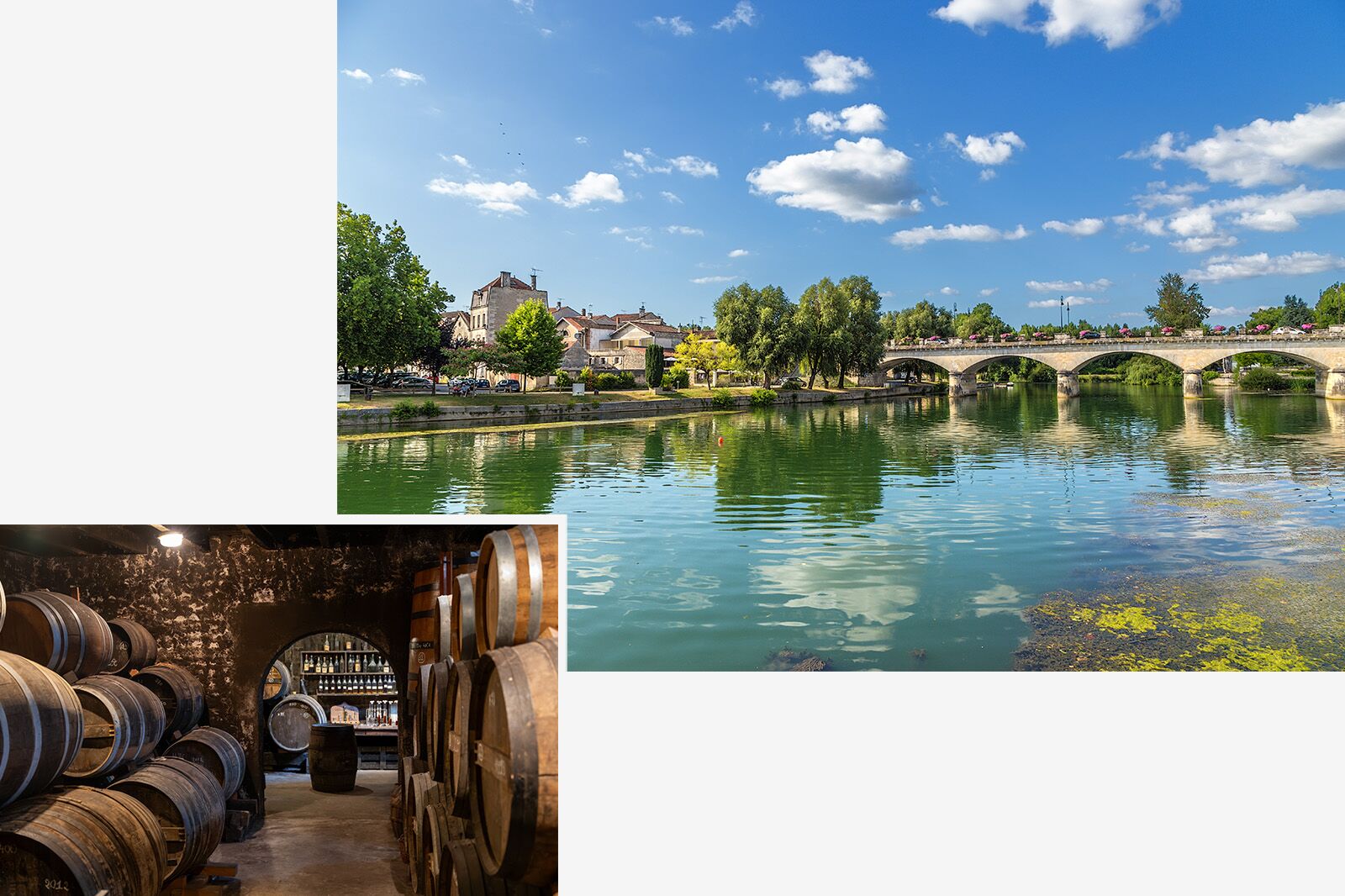
Photos: Valery Rokhin/Shutterstock and barmalini/Shutterstock
- Why we love it: Wine is an underrated, but important part of this region more famous for its eponymous brandy
- What wines to try: Ugni blanc and colombard
- Best place to stay: Hôtel Chais Monnet
Cognac is a name known around the world, though for the eponymous brandy not for wine. Gorgeous hotels, refined restaurants and bars, engaging tours — all are centered on Cognac, the brandy, and make the small village an incredible destination for anyone who loves French spirits. That said, all great brandy starts with great wine. (It’s also worth noting that the term “brandy” comes from the Dutch “brandewijn,” which translates to “burnt wine” in reference to distillation.)
Cognac, located north of Bordeaux, is defined by the Charente river. The river impacts the microclimate, of course, but is also how the region’s brandy became a luxury export good. The wine region is named after the river: IGP Charentais, which is largely the same area designated for brandy. Ugni blanc, folle blanche, and colombard grape varieties are popular for the brandy thanks to the high acidity and low alcohol content, and they make their way into the wines as well. Charentais wine is also made from chardonnay, sauvignon blanc, cabernet sauvignon, merlot, gamay, and pinot noir. The whites are typically dry and floral, while the reds are light and fruity from a terroir defined by chalky limestone soils and a maritime climate.
It isn’t uncommon to be served spirits with meals in Cognac, though more often a regional wine will grace the table with food at restaurants. One beverage unique to the region that you may encounter at farm distilleries or wineries is pineau des Charentes. It’s made by blending fresh, unfermented grape juice with unaged Cognac for a refreshing (and hyper-local) drink.
The closest airport is in Bordeaux, and then Cognac is about an hour-and-a-half drive north. By train, Cognac connects to France’s major cities and is about three hours from Paris. Accommodations, like the premier Hôtel Chais Monnet as well as places like Château Pellisson (and the rustic-chic Airbnbs), understandably have more of a brandy theme than wine theme. That doesn’t make the stunning properties any less attractive for the wine tourist, however.
Hautvillers, Marne
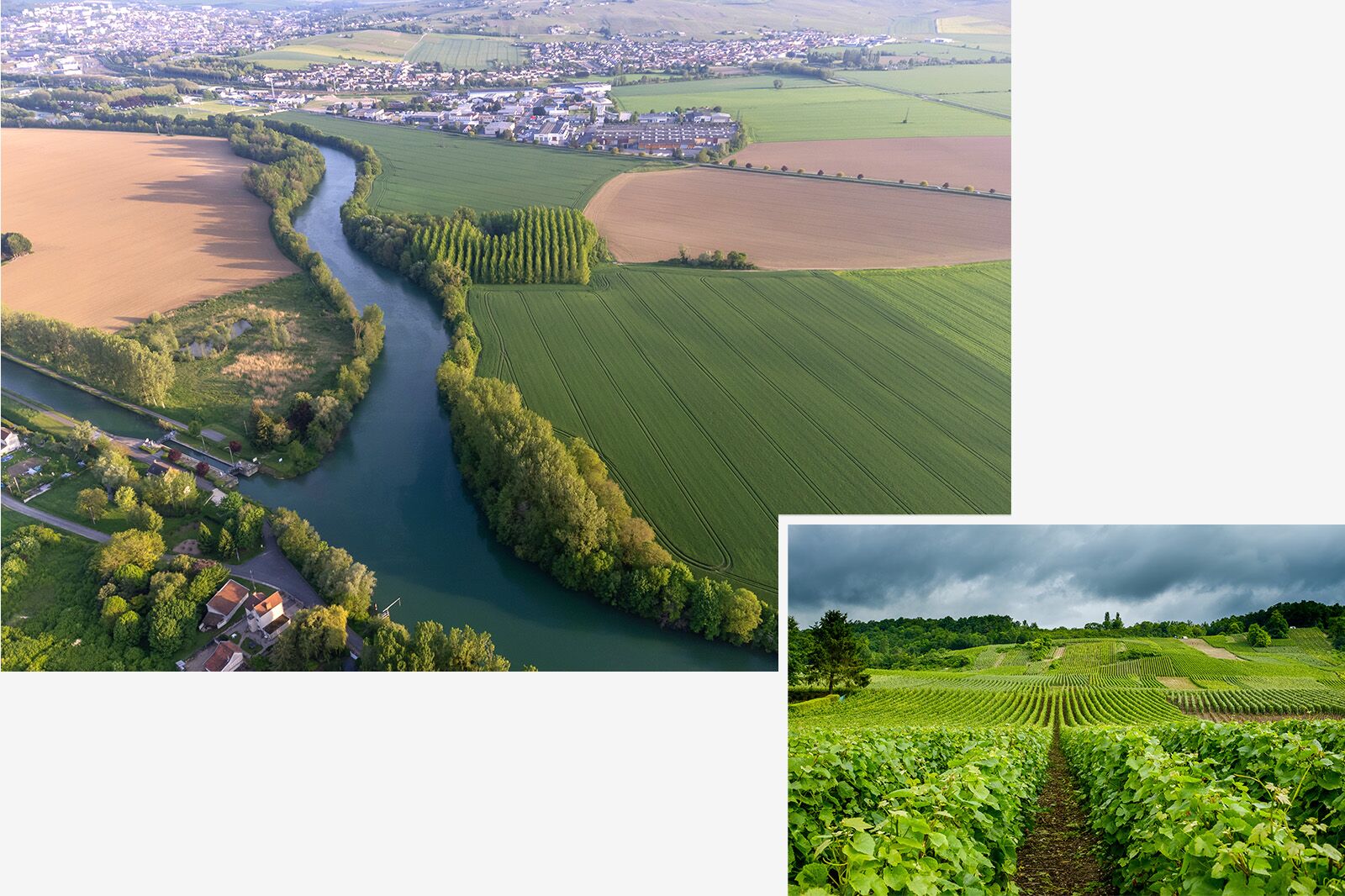
Photos: barmalini/Shutterstock and ChrisMannPhoto/Shutterstock
- Why we love it: The town where Dom Pérignon made his remarkable contributions to winemaking
- What wines to try: Champagne
- Best place to stay: Champagne Joseph Desruets
Hautvilliers, located in the Champagne region and surrounded by vineyards, is no ordinary village even by Champagne standards. It’s known as the “Cradle of Champagne” due to its link with the Benedictine monk Dom Pérignon. The monk is better known for the brand carrying his name these days, and it’s safe to say there would be no Champagne wine as we know it without him.
Dom Pérignon became a monk at the Abbaye Saint-Pierre d’Hautvillers in 1668 and worked as the cellar master until he died in 1715. He played a crucial role in the development of Champagne production and was instrumental in creating the in-bottle secondary fermentation that gives the wine its bubbles and other practices that define the Champagne method still used today. You can visit or take a guided tour of the 12th-century former abbey, which serves as the monk’s final resting place.
If you want to take part in a Champagne tasting but stay within the village, make your way to Entre Cave et Jardin, a mix of antique shop and wine seller. There, the oenologist, formerly a cellar master at a prestigious Champagne house, will gladly take you through a comparative tasting of Champagne styles. For a cellar tour and a tasting, head to the family-run Champagne A.D. Coutelas, a few minutes outside of town, or Champagne A. Chauvet, just 15 minutes away from the village, where you can try out rosé Champagne.
Beyond wine, a stay in Hautvillers offers you a glimpse into the daily life of a Champagne village. You can while away an afternoon strolling the narrow cobblestone streets lined with stone houses with wrought-iron balconies and take in the beautiful countryside.
Montreuil-Bellay, Maine-et-Loire
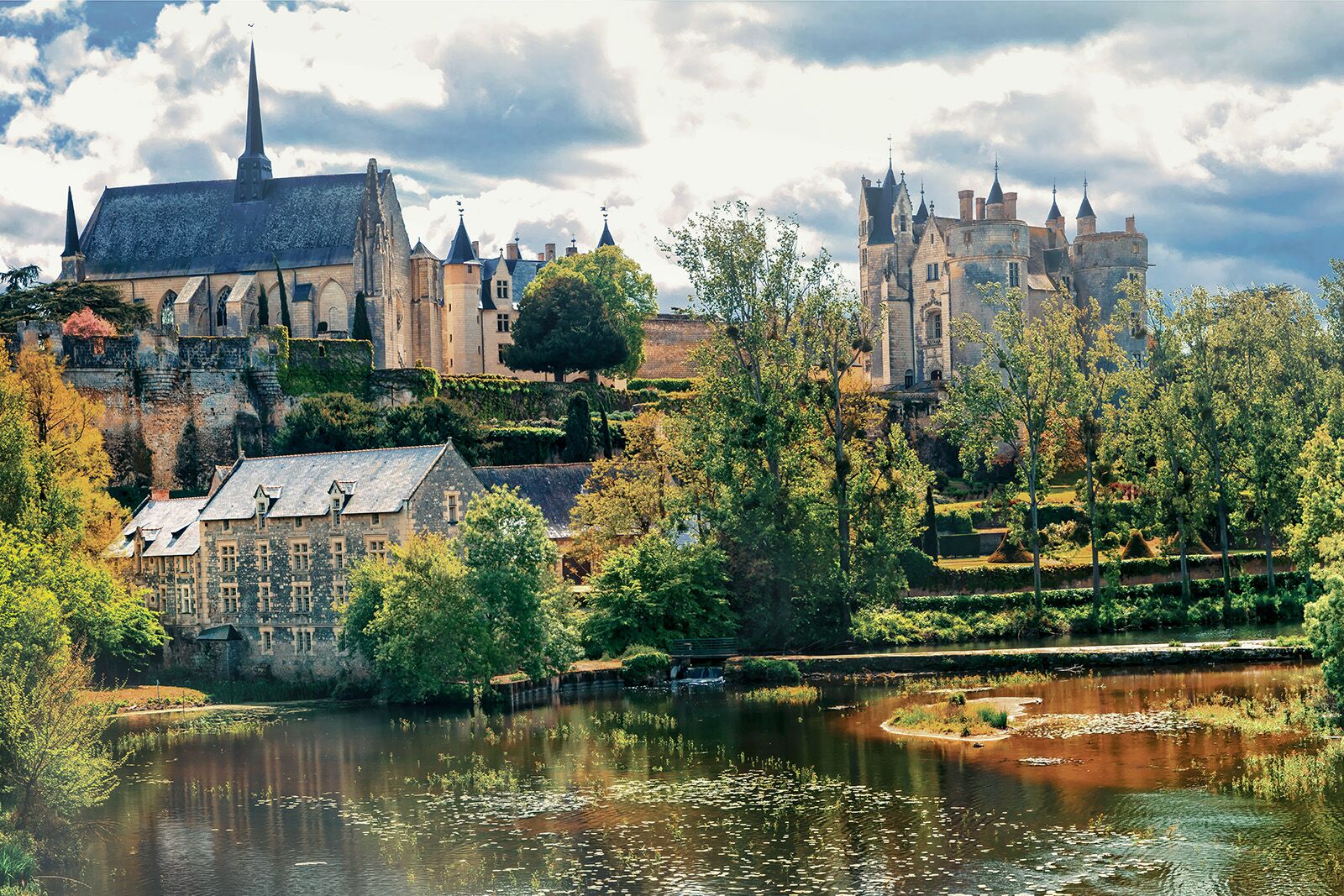
Photo: leoks/Shutterstock
- Why we love it: A small, historic town with a magnificent castle
- What wines to try: Cabernet France, chenin, and chardonnay
- Best place to stay: Manoir du Bellay
One of the prettiest small towns in France, Montreuil-Bellay sits on the bank of the River Thouet in the west of the country. The biggest attraction in town is the impressive medieval fortress. Inside the fortress is the well-preserved 15th-century Montreuil-Bellay Castle, a grand edifice where several of the kings of France have stayed over the centuries, and where 1,200 wounded soldiers were hospitalized during the First World War. Open to the public between April and December, the castle is also where you’ll find some of the best wines in the area made in the Saumur and Crémant de Loire appellations. In the newly renovated wine cellar, the owners keep their vineyard’s production of red, white, rosé, and sparkling wines made primarily with cabernet Franc, chenin, and chardonnay grapes. Visitors can purchase bottles on site and take part in wine tastings. If you wish to see the fortress and the town from a different perspective, rent a canoe, kayak, or pedalboat and spend a couple of hours floating on the river.
For another wine tasting in the area, make your way to the nearby Château de la Durandière, a 17th-century castle surrounded by a large vineyard. You’ll be able to visit the cellar and try out red, white, and sparkling wines. Regardless of where you taste, don’t sleep on the bubbly (crémant), which is made in the Champagne method for wines that rival the more famous sparkling wine region in flavor but not price.
Olmeto, Corse-du-Sud
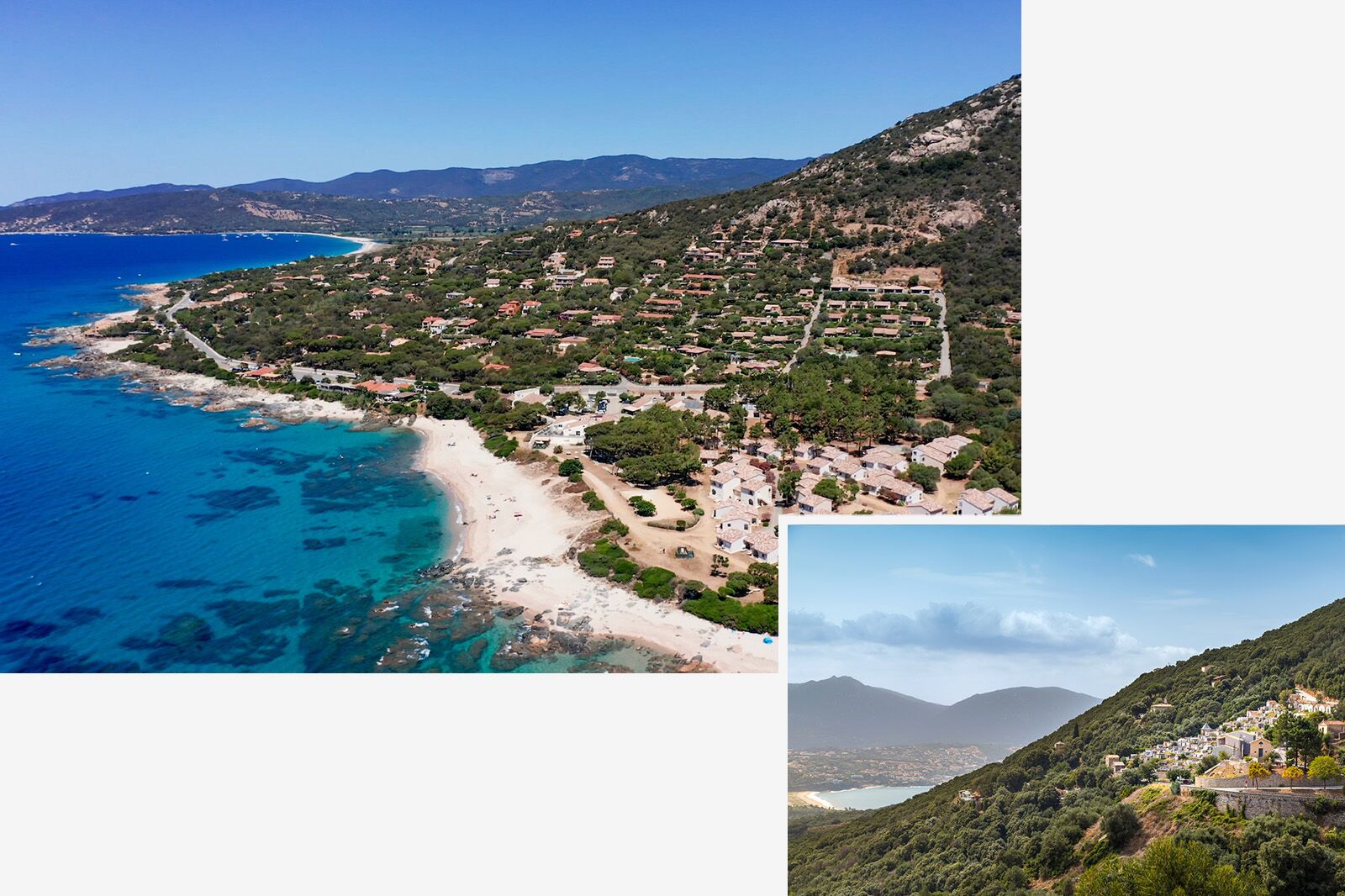
Photos: Wazir2004/Shutterstock and Evannovostro/Shutterstock
- Why we love it: Mediterranean terroir combined with French culinary and viticultural tradition
- What wines to try: Malvasia, niellucciu, and sciaccarellu
- Best place to stay: Domaine de Murtoli
Olmeto, in Southern Corsica, offers the best of Mediterranean culture: fresh ingredients, stunning natural sights, and fantastic wine. The wine region is situated between rugged mountains and the crystal-clear waters of the Tyrrhenian Sea. Corsica, known as the “Island of Beauty,” is celebrated for its dramatic landscapes, and Omelto exemplifies this and adds a welcoming atmosphere.
The surrounding wine region dates back to antiquity when the Greeks and Romans introduced viticulture to the island. The terroir here is influenced by the island’s diverse microclimates, mineral-rich soils, and coastal breezes, resulting in wines of exceptional character and balance. Corsican wines are primarily produced under the island’s Protected Designation of Origin (PDO), with Ajaccio PDO being the closest appellation to Olmeto.
Key grape varieties in the region include niellucciu and sciaccarellu for reds and rosés with spicy undertones and notes of wild herbs, often referred to as maquis (scrubland) aromas. For whites, vermentino (locally called malvasia) dominates, producing crisp, aromatic wines with citrus and floral notes. You may feel more like you’re in Italy than France, particularly due to the offshore location, but once you taste the cheese, you’ll be reminded of exactly where you are.
Riquewihr, Haut-Rhin
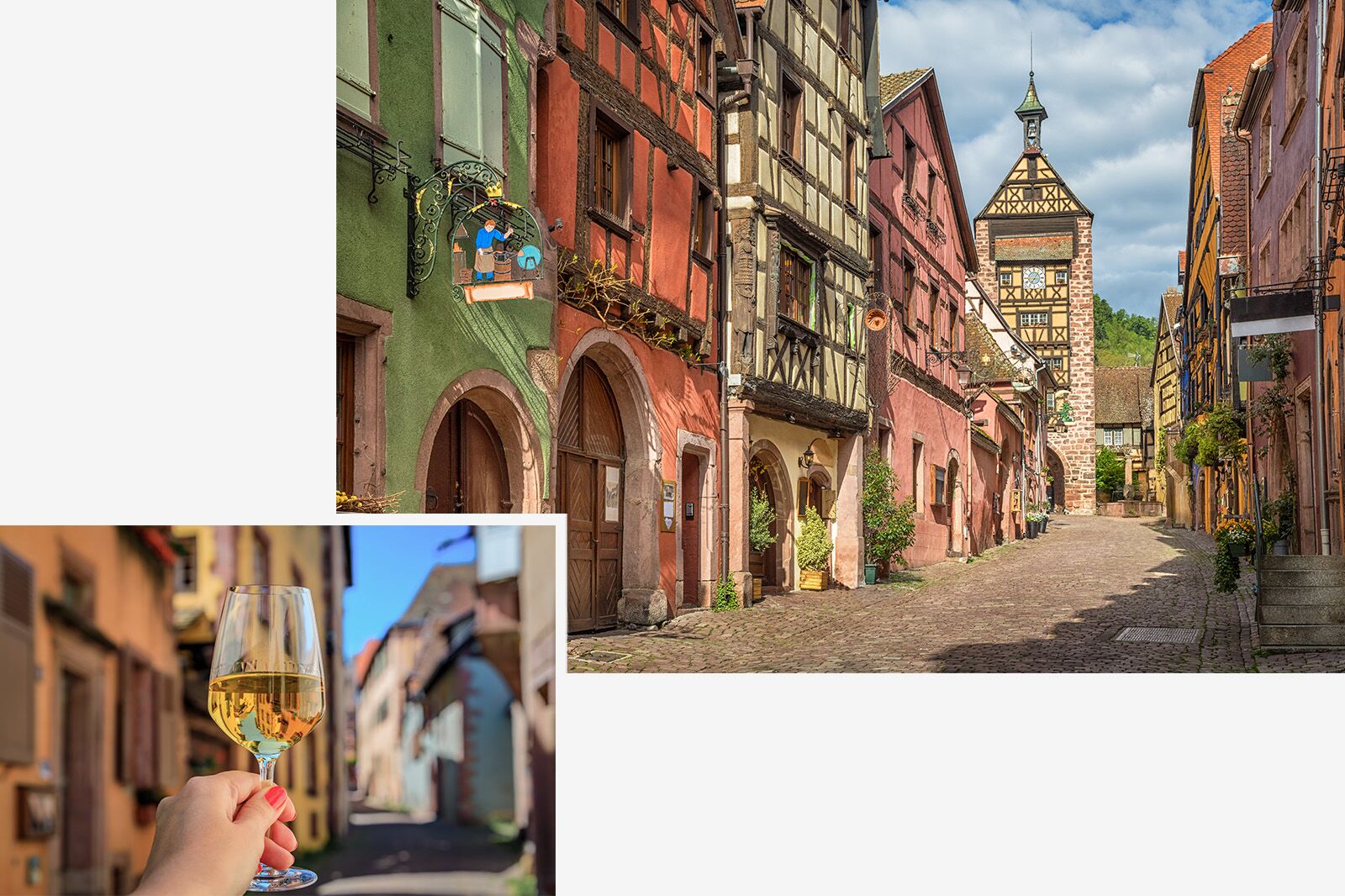
Photos: Sergey Dzyuba/Shutterstock and SvetlanaSF/Shutterstock
- Why we love it: A tiny medieval town defined by both French and German wines
- What wines to try: Gewürztraminer and riesling
- Best place to stay: Au Cerf Riquewihr
Riquewihr is a picturesque village in Alsace that’s widely regarded as one of the best small towns for wine lovers in all of Europe, let alone France. It has a long winemaking legacy (the first winery in the region was likely operating before 1,000 CE), as well as a strong architectural history. Still-standing parts of the town date to the 13th century, though it was founded in the 8th century. It sits on the popular Route des Vins d’Alsace (Alsace Wine Route) with a population of just over 1,200 people, making it one of the prettiest small towns on the 122-kilometer route.
When not winding through the narrow lanes, you’ll want to explore the town’s 2.6-mile Geo Vino Route. It’s a relatively easy walking trail that winds through vineyards and culminates in stunning views of the medieval town. Winery visits and tasting rooms in Riquewihr are usually intimate, welcoming, and on the smaller side. Tasting rooms are typically in historic buildings or underground cellars, surrounded by stone walls and rustic timber. There’s a good chance the tasting room might also be the storage room, and you’ll likely be able to stay and linger without feeling rushed.
The Haut-Rhin region of Alsace abuts the border with Germany, so perhaps it should come as no surprise that German-style whites are must-tries in the region. Gewürztraminer and rieslings with high minerality are commonplace, though pinot gris and muscat are also widely produced. Those are key varieties throughout Alsace, though this particular region is known for the age and heritage of its many vineyards (of which Riquewihr alone has at least 20).
The town is busiest in the summer, making late spring an ideal time to visit. Harvest season in September and October can also be fun, but busy. Winter is colder and you may have snow on the ground, but you’ll get to attend the town’s charming Christmas market if you visit in December. Early spring is a little slow and some wineries may close, but you’ll get smaller crowds and more affordable lodging rates.
Saint-Émilion, Gironde
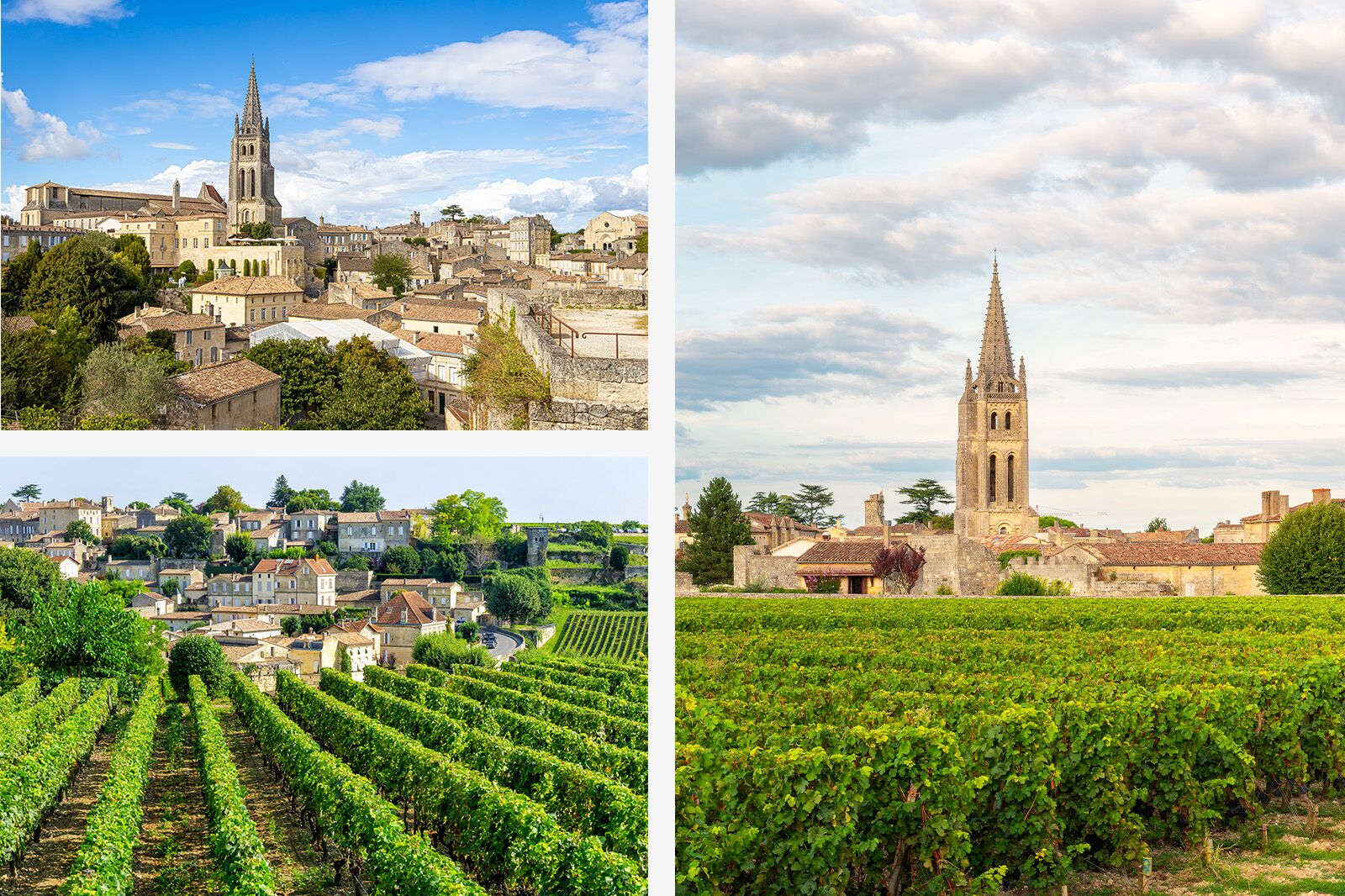
Photos: Alexey Fedorenko/Shutterstock, laraslk/Shutterstock, and artem avdokimov/Shutterstock
- Why we love it: A picturesque town surrounded by vineyards and wineries that’s easily accessible by bike
- What wines to try: Cabernet France and merlot
- Best place to stay: Château Troplong Mondot
The charming UNESCO-listed village of Saint-Émilion has been producing wine since the third century BCE. Its position in the heart of the Bordeaux wine region attracts travelers keen to take part in winery tours, tastings, and gourmet dining, as well as enjoy the village’s picturesque architecture and historical monuments.
The Saint-Emilion area is home to no fewer than 145 wineries, many of which are family run and surround the village. Pick a couple (Château La Gaffelière is a solid nearby choice), and make your way there by bike from one of the rental shops in the village to meet the winemakers, learn about their craft and its history, and sample a range of red wines. If your budget allows, visit (and stay at) Château Troplong Mondot. The esteemed Grand Cru Class estate is perched on a hilltop overlooking Saint-Émilion. It offers a luxurious wine-tasting experience while taking in the panoramic views of the vineyards.
The gastronomy of Saint-Émilion is understandably heavily intertwined with its wine production. Local restaurants and tables d’hôte showcase the very best of the region’s culinary traditions, pairing local dishes with the celebrated wines. For fine dining, Les Belles Perdrix, located at the highest point of the hilltop property of Château Troplong Mondot, has a Michelin star. As does one of the village’s oldest restaurants, Logis de la Cadène, which serves a menu showcasing some of the finest cuisine from southwest France. Despite the size of the village, there is a surprising number of options for all budgets. L’Envers du Décor, located near the village’s bell tower, offers regional cuisine using fresh, local ingredients at reasonable prices for a more casual affair.
Villeneuvette, Hérault
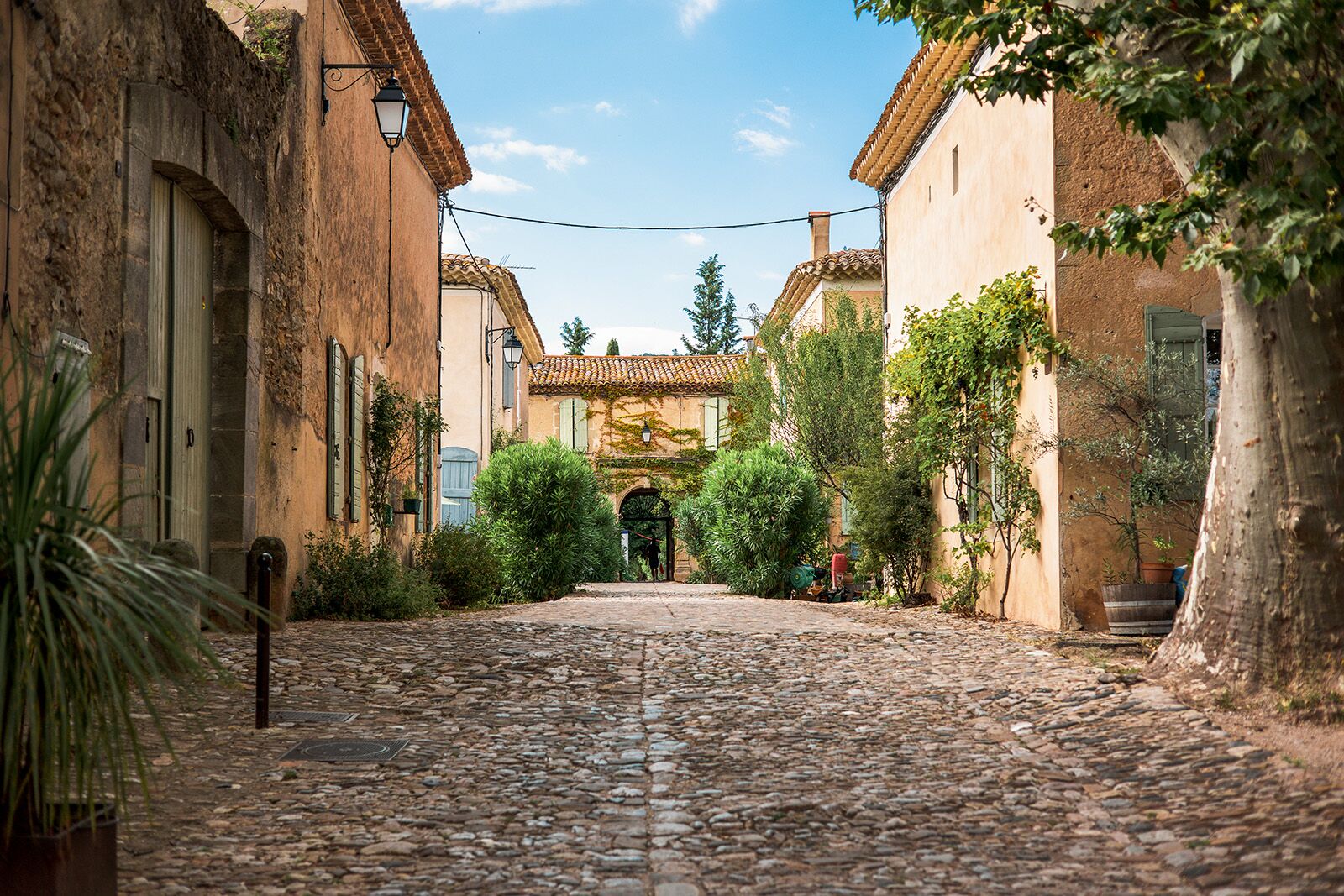
Photo: Idgfr Photos/Shutterstock
- Why we love it: Small historic village full of artists workshops. Excellent dining options and proximity to vineyards
- What wines to try: Blends of syrah, grenache, mourvèdre, carignan, and cinsault
- Best place to stay: Moulin Haut
Built in the 17th century around a textile factory, Villeneuvette is a tiny village of fewer than 100 inhabitants today. The walled hamlet, with its impressive entry gate inscribed with “honor in work,” consists mostly of traditional green-shuttered homes that used to house the factory workers. Wander around the paved, pedestrian streets; visit the many artisans workshops, from jewelers to potter, luthier, and hat makers; and stop on the main square to rest by the fountain under the shade of plane trees. Plan your trip around the organic market that takes place every Tuesday night between April and September, that way, you’ll try some local specialties and meet the locals.
It can all play second fiddle to the excellent wine made in the area. A L’ombre du Platane, a small cafe and bar with open-air tables inside the walls of Villeneuvette, is only open during the summer, but is a good place to start sampling the local wine production. For a more elevated dining experience there is Restaurant La Source, located in the basement of an old château next door to the village. There’s also outdoor seating on the poolside terrace and guest rooms if the sommelier persuades you to enjoy more than a glass along with the seasonal menu.
For a local vineyard experience, make your way to Mas René Guilhem less than three minutes away by car. There you can sample and purchase organic red, rosé, and white Pays d’Herault and Languedoc wines. Just make sure you call ahead. ![]()










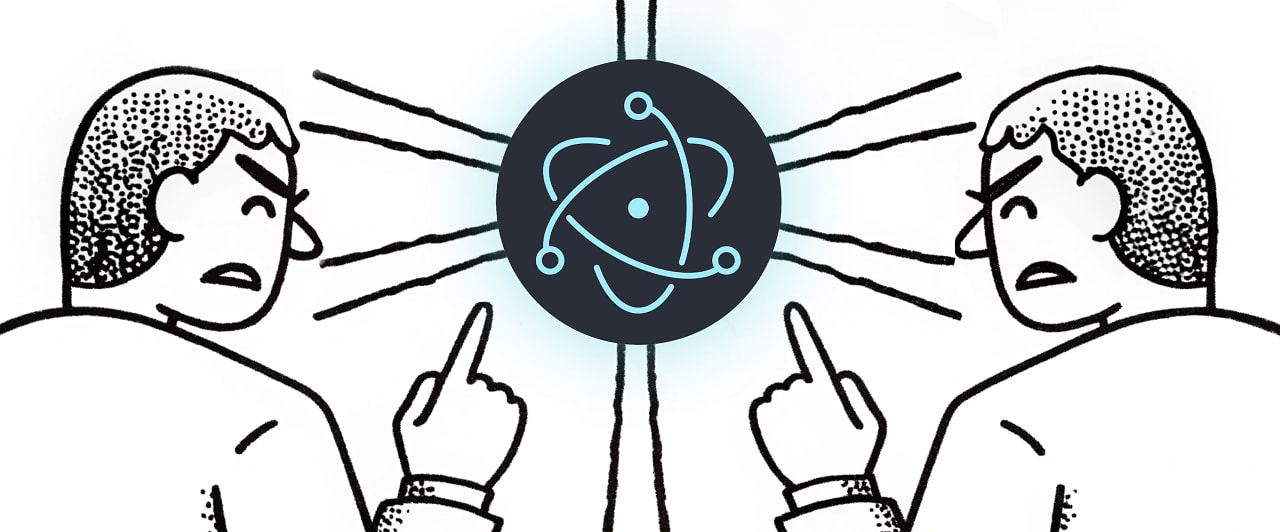


![From Gas Station to Google with Self-Taught Cloud Engineer Rishab Kumar [Podcast #158]](https://cdn.hashnode.com/res/hashnode/image/upload/v1738339892695/6b303b0a-c99c-4074-b4bd-104f98252c0c.png?#)




